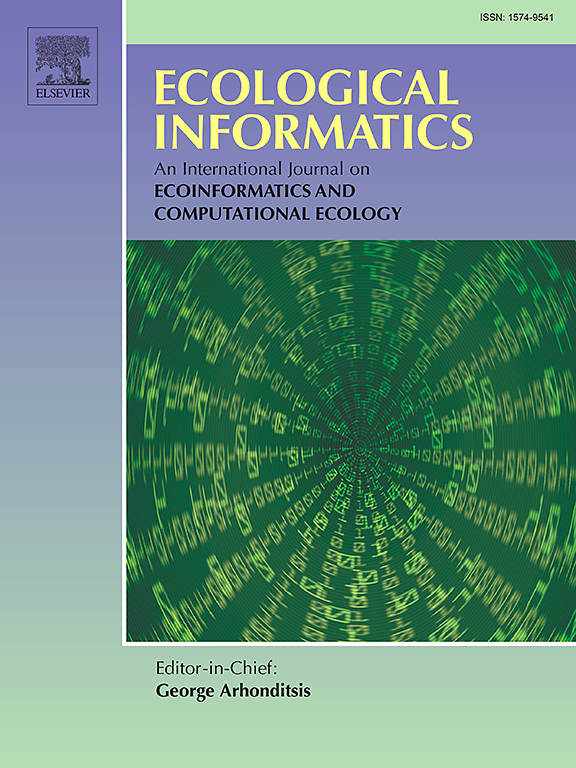This is EPIC: Extensive Periphery for Impact and Control to study seabird habitat loss in and around offshore wind farms combining a peripheral control area and Bayesian statistics
IF 5.8
2区 环境科学与生态学
Q1 ECOLOGY
引用次数: 0
Abstract
With the rapidly increasing intensity of human activities in the marine realm, it has become urgent to better understand the impacts of human-induced disturbances on marine species. Marine mammals and birds are often observed to alter their fine-scale spatial distribution patterns in the presence of human at-sea activities, such as ship traffic and offshore wind farms (OWFs). This study presents EPIC (Extensive Periphery for Impact and Control), a novel approach for investigating such displacement in marine megafauna. The approach consists of a survey design that uses the OWFs surroundings in all directions as control space, complemented by a sophisticated statistical approach to quantify the extent and intensity of displacement and habitat loss in and around the area of potential disturbance. The approach is showcased by investigating the effects of an OWF in the Dutch North Sea on the habitat use of razorbills (Alca torda) and common guillemots (Uria aalge), two seabird species that occur in large numbers across the North Sea. We used an explicit spatial-temporal Bayesian model to predict their spatial distribution patterns based on eight aerial surveysed. The model output is used for a simulation study, comparing bird densities in the potential impact area with 1000 similarly sized control areas from the peripheral control space and from these, displacement around the OWF. Strong displacement was found for both razorbills and guillemots, within the OWF footprint but also in its surroundings. Razorbill and guillemot densities inside the OWF were reduced by 0.953 and 1.604 individuals per km2, respectively, compared to the remainder of the study area, remaining considerably lower than control densities up to 2 km and > 10 km distance. The presented methodological approach holds great potential for future studies on the effects of local disturbances on displacement of marine megafauna.

求助全文
约1分钟内获得全文
求助全文
来源期刊

Ecological Informatics
环境科学-生态学
CiteScore
8.30
自引率
11.80%
发文量
346
审稿时长
46 days
期刊介绍:
The journal Ecological Informatics is devoted to the publication of high quality, peer-reviewed articles on all aspects of computational ecology, data science and biogeography. The scope of the journal takes into account the data-intensive nature of ecology, the growing capacity of information technology to access, harness and leverage complex data as well as the critical need for informing sustainable management in view of global environmental and climate change.
The nature of the journal is interdisciplinary at the crossover between ecology and informatics. It focuses on novel concepts and techniques for image- and genome-based monitoring and interpretation, sensor- and multimedia-based data acquisition, internet-based data archiving and sharing, data assimilation, modelling and prediction of ecological data.
 求助内容:
求助内容: 应助结果提醒方式:
应助结果提醒方式:


